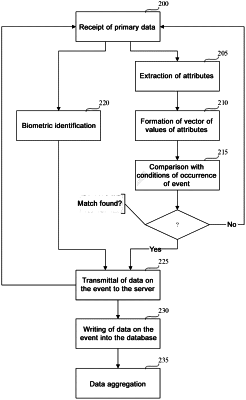| CPC G06F 16/24558 (2019.01) [G06F 11/302 (2013.01); G06F 11/3438 (2013.01); G06F 16/2379 (2019.01); G06F 21/32 (2013.01)] | 10 Claims |

|
1. A method of providing value to a behavior associated with a user interaction event with a computing device, the method comprising:
defining a plurality of signs associated with the behavior, thereby forming a plurality of dimensions;
assigning a value for each sign, thereby forming at least one assigned vector of values descriptive of such signs, wherein the behavior is associated with the at least one assigned vector of values, wherein the vector of values includes the plurality of dimensions corresponding to associated instants of time responsible for the user interaction event;
monitoring the user behavior in interacting with the user device;
for each sign, determining the difference in values between the measured value and the assigned value, thereby forming at least one measured vector of values descriptive of the interaction event; and
according to at least one condition for the occurrence of the interaction event, determining the difference between the assigned vector of values descriptive of the behavior, and the measured vector of values descriptive of the interaction event, thereby providing value to the behavior associated with the user's interaction event with the computing device.
|